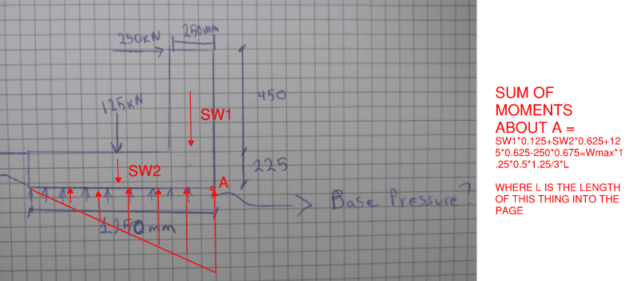Hi,
Can you please advise what's the applied pressure kn/m2 under the base will be at the attached sketch?
It's the horizontal force to the wall that I am not quite sure how to include in the applied base pressure.
Can you please advise what's the applied pressure kn/m2 under the base will be at the attached sketch?
It's the horizontal force to the wall that I am not quite sure how to include in the applied base pressure.

